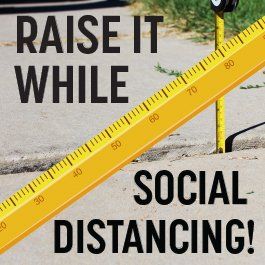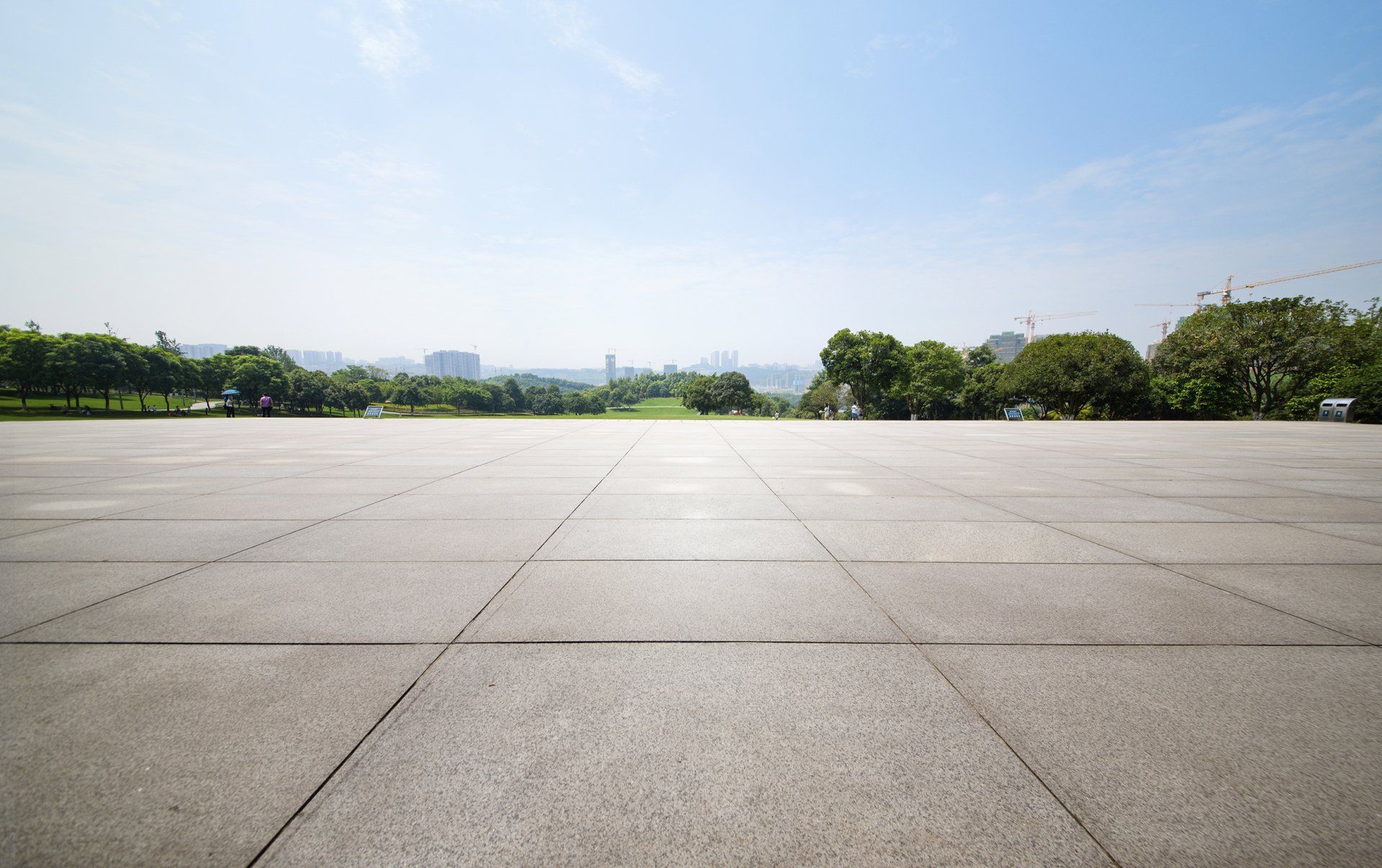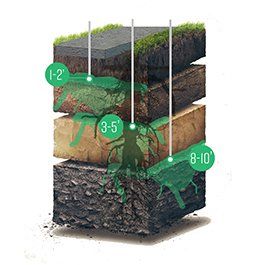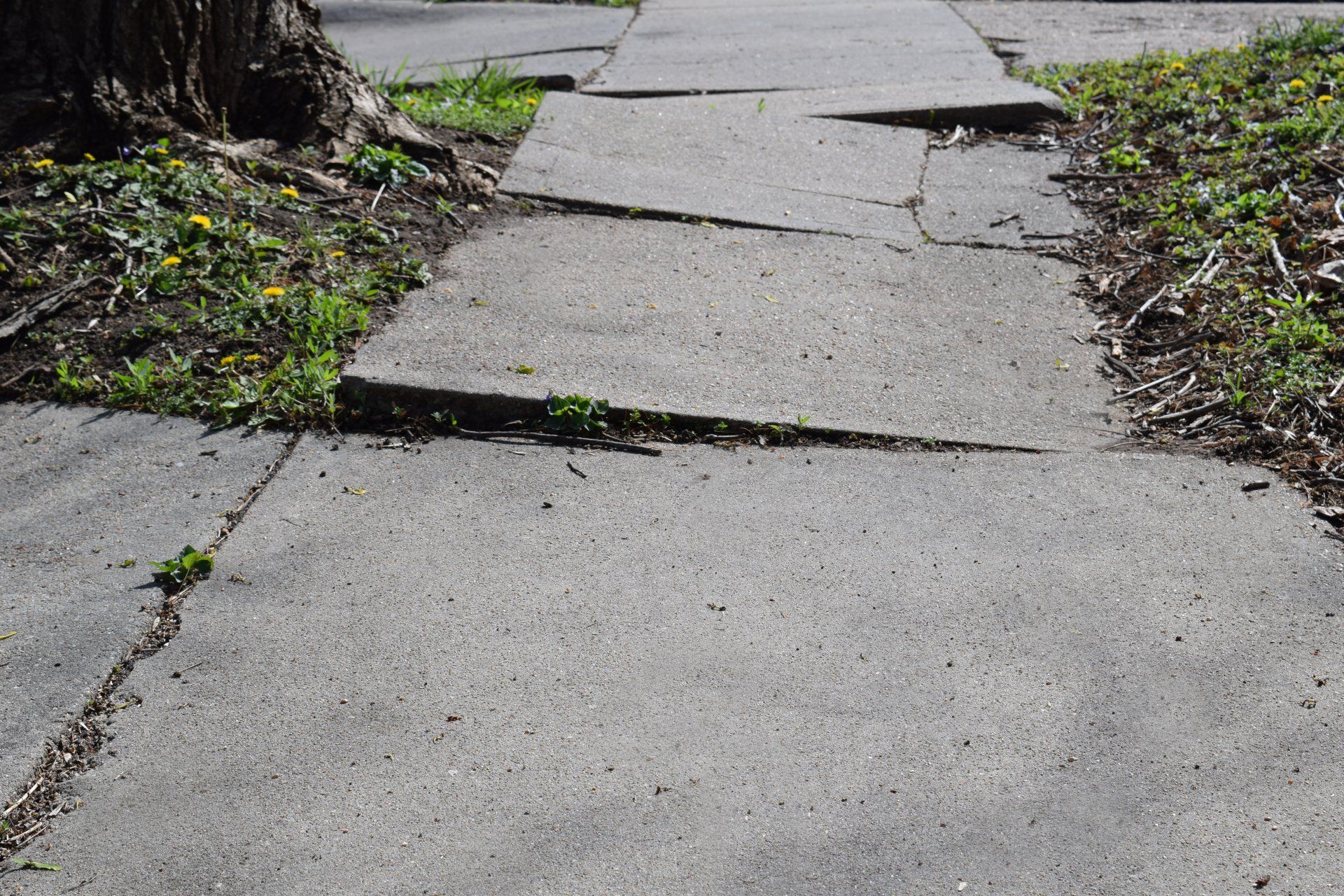Why Does Concrete Settle?

Poor Soil Condition
Clay-rich soils are ‘elastic.’ They expand and contract with moisture content. As soils become saturated with water, the clay expands and loses strength. This condition allows slabs to sink just like standing in wet mud. This can occur from heavy rains, melting snow or plumbing leaks.
Poor Compaction
Many homes are built on back filled soils. If the soil is not compacted correctly, backfill will slowly and unevenly compact, sometimes over a period of a year, allowing slabs to settle.
Tree Roots
Trees and large shrubs can consume up to 30 gallons of water a day, if located near concrete, the loss of water in the soil will make the soil contract and can cause the slabs to settle.
Poor Drainage
Improper drainage can cause soil instability by creating areas of saturated soils allowing the slabs to settle. Poor drainage can be typical to the area, or as minor as a misplaced down spout.
Steps to Raising Your Concrete
- Injection holes are strategically drilled around the areas where the concrete is sunken and requires lifting.
- Once everything is prepped and the hose and materials are in place, the polyurethane foam is injected through the holes. This fills the space underneath the concrete slab and using the foams expansive forces lifts the concrete back to its original and correct level.
- Upon completion of leveling the concrete, the injection holes are filled discretely with new cement, allowing you to use the surface almost immediately.
Summary:
Polyurethane concrete raising uses a foam material that is injected under the slab. When the components of this material are mixed, a reaction causes the material to expand. This expanded foam fills any voids beneath the slab and raises concrete. This material will never lose density, is permanent and weighs only about 2 lbs per cubic foot.

• Concrete repair work is outside work where prospects were not in any way threatened by a contractor visit. • With “stay at home directives” property owner are looking to accomplish “SOMETHING” beyond watching the same movies or spending too many hours on social media. Any inside the house repairs or improvements were out of the question. • The Concrete Lifting Technologies estimating, scheduling, and invoicing processes do not require face to face interaction with the customer. In reality most customers are usually not at home when we give estimates or do the work. These facts allowed us to immediately conform to social distancing recommendations. Concrete repair contracting, the Concrete Lifting Technologies way, is positioned to be successful in our current environment and will allow you to be successful no matter how long the current restrictions and recommendations last. Concrete repair is Covid 19 Friendly Contracting.

Concrete problems can came out of nowhere after a big rainstorm but usually a concrete problem is an underlying issue that happens slowly over time. We’re here to help alert you to some of the most telling signs you may have a concrete issue in its early stages. We’ll also help find a solution before the problem escalates





